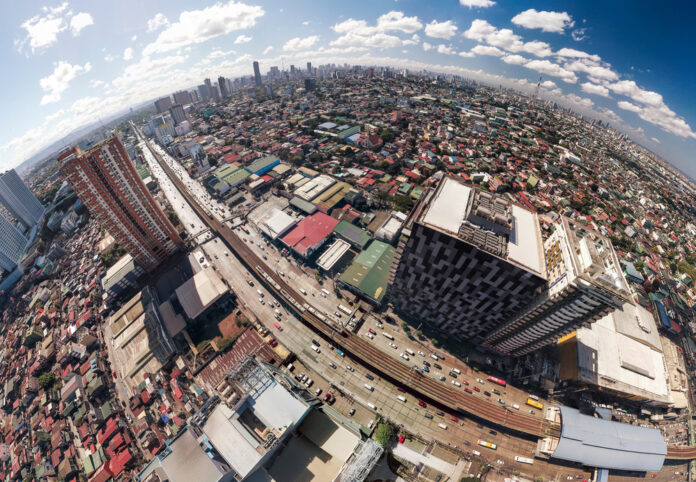The Philippines has chronically underspent for public infrastructures like roads and railways for decades and the hope is for state spending to ramp up under incumbent President Ferdinand R. Marcos Jr., experts told the Manila-based Asian Development (ADB).
At the recent ADB sponsored webinar looking into the economic impact of the infrastructure buildup conducted by the government in recent years, the experts agree that as percent of local output measured as the gross domestic product (GDP), infrastructure spending typically equal only 5 percent of GDP.
Roderick Planta, assistant secretary for infrastructure development at the National Economic Development Authority (NEDA), noted that while then President Rodrigo Duterte endeavored to spend 5 percent of local output for public infrastructures and that the outlook on spending in that space under President Ferdinand R. Marcos Jr. is not encouraging.
“The facts are instructive. We have underinvested in infrastructure as a sector. In 1999, the total investments in the sector stood at only P55 billion or (about 1 percent) of GDP and in 2012 we spent P215 billion or 2 percent of GDP. We really started ramping up investment in infrastructure in 2015 and 2016 at 4.1 percent and 4.3 percent. The entire Duterte administration spent only 5 percent of GDP,” he observed.
Under President Ferdinand R. Marcos Jr., “the trajectory is seen continuing, meaning the transportation resource envelope did not really expand as much for the past many years,” Planta said.
Experts like Planta believe that something is holding back the country’s continuing effort to boost infrastructure buildup and argue that the barrier likely is not the bureaucratic approval of the projects.
“By this we can infer that if the approval stage is not the bottleneck, then we can narrow it down to project preparation and development as the logical culprit. We may say of related factors like abilities, property consideration, right of way (issues) but it’s the project development cycle not churning out ready-to-go projects for approval, subsequent financing and then implementation,” he said.
Arturo Corpuz, statistician and urban regional planner at the NEDA, said he looks forward to the day when “regulations that are zero-sum, anti-urban and misleading policies” are removed from the project approval process.
“Clearly, we need to protect prime agricultural lands and the environment sensitive to disaster prone areas, but it does not have to be a zero-sum approach. For example, preventing urban expansion around large cities will require more than double total urban land compared to merely letting the smaller cities, the smaller settlements absorb the additional population. In other words, preventing urban expansion in the interest supposedly of land conversion actually leads to more conversion and this is why sometimes it is misleading,” he said.
This relates for the most part to issues impinging the ongoing construction of the North-South Commuter Railway (NSCR) program and the need to balance the project’s benefits to Filipinos and its cost.
“Another area that could be looked into is to make sure the infrastructure support network is in place. This is especially relevant to the NSCR because its corridor is already developed. Remember, this is essentially the right-of-way (ROW) of the Philippine National Railways (PNR) built more than 100 years ago. While the areas immediately around the stations can react, we need to make sure the connections to the outer areas, outer communities, are put in place. That may seem simple and easy but it can be challenging given the institutions and the history of which land use planning and zoning has taken place,” he said.
James Leather, chief of the transport sector group at ADB, acknowledged that the institution focused its development assistance to the Philippines only in roads and not in other transport modes such as rails, and that this has since been realigned for optimum impact on member states as the Philippines.
“In ADB we have a heavily dominant road subsector going back as far as 2010. Ninety percent of our support was in the road subsector. We realized that wasn’t addressing the needs of our clients and the driving ambition of more sustainable, energy efficient, less emitting forms of transport. So, we set internal target of around 20 percent for urban transport, public transport and 20 percent for rail. So now we have a much more balanced portfolio: 50 percent roads, 25 percent heavy rail and 5 percent public urban transport, metro systems and buses.
“Yes, roads are important but we must prioritize these other modes of transport. It’s (rail system development on the sovereign side in the case of Manila) been a key shift in our focus in the skills and services we are offering as support to our clients,” Leather said.
In context, the Philippines under President Marcos Jr. under his Build Better More program seeks to boost the budget for infrastructure to equal 5.4 percent of GDP this year or P1.28 trillion, another 5.4 percent of GDP next year or P1.39 trillion, 5.3 percent of GDP in 2025 or P1.51 trillion and 5.5 percent of GDP in 2026 or P1.71 trillion as agreed at the Cabinet-level Development and Budget Coordinating Council (DBCC) meeting late last year.
Globally, the need for better and more public infrastructures is huge as the World Bank published data in 2019 showing that 1.2 billion individuals live without electricity, 2.4 billion lack sanitation facilities, some 1 billion live more than two kilometers from an all-weather road and that uncounted number are unable to access work and educational opportunities due to the lack or high cost of transport services.







